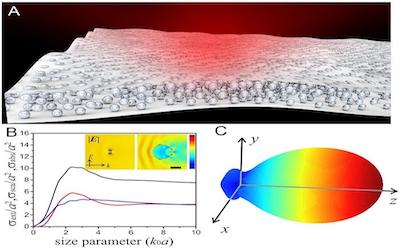PTE考生目前最大的问题之一就是练习题缺乏。除了有限的基本官方书(PLUS,Testbuilder, OG)之外就没有题了。很多英语基础不是很扎实的同学很难找到练习材料。悉尼文波雅思PTE培训学校专门为澳洲,尤其是悉尼、墨尔本的PTE考生准备了适合PTE听力阅读练习的科学60秒。各位PTE同学可以练习PTE听力中的summarise spoken text和PTE口语中的retell lecture,PTE听力口语-科学60秒-Frosty Moss练习记笔记技巧和复述。废话少说,下面开始:
听力内容:
60秒科学节目(SSS)是科学美国人网站的一套广播栏目,英文名称:Scientific American – 60 Second Science,节目内容以科学报道为主,节目仅一分钟的时间,主要对当今的科学技术新发展作以简明、通俗的介绍,对于科学的发展如何影响人们的生活环境、健康状况及科学技术,提供了大量简明易懂的阐释。
This is Scientific American — 60-Second Science. I’m Christopher Intagliata.
You’ve probably seen pictures of Greek villages, where every house is painted bright white. The paint reflects the intense sunlight of the Mediterranean. And it works pretty well to keep the houses from heating up in the sun. But it doesn’t actively cool them.
To understand why, consider what the white paint does. Here’s how optical scientist Xiaobo Yin of the University of Colorado describes it: “It’s a mirror for the sunlight, it’s also a mirror for the radiation as well.” And it might seem like reflecting all those incoming rays would be a good thing. But the benefit is limited. Because what it really means, Yin says, is that the houses, well, “they don’t release much energy.” Release more energy, again in the form of infrared radiation, aka heat—and you effectively get free A/C.
So Yin and his colleagues built a material that does exactly that: reflects visible light, but also emits infrared wavelengths. Which gives it the power to actually cool. It’s two layers: a top layer of polymer, packed with glass beads just eight microns across—so they can absorb and then emit infrared radiation. And a silver coating on the bottom.
The material reflects 96 percent of solar radiation—a slight improvement on white and silver paint. But the game-changing part: it also has a cooling power of about 100 watts per square meter. Translation: enough to cool a frying-pan-sized amount of water to about 15 degrees Fahrenheit cooler than ambient temps. Even while sitting in the sun. The finding is in the journal Science.
That cool water example has wide applications. “This water can be used to cool a house, cool a data center, or even cool a thermoelectric power plant.” That’s Yin’s colleague at the University of Colorado, Ronggui Yang. And he says it’s a cheap way to cool things down. Just don’t put the material directly on your roof. “It also cools down during the wintertime. And you do not want that to happen.” No. Definitely… not cool.
Thanks for listening for Scientific American — 60-Second Science Science. I’m Christopher Intagliata.
墨尔本悉尼文波PTE原创首发
更多精彩请持续关注微信wenbo_tv3。





